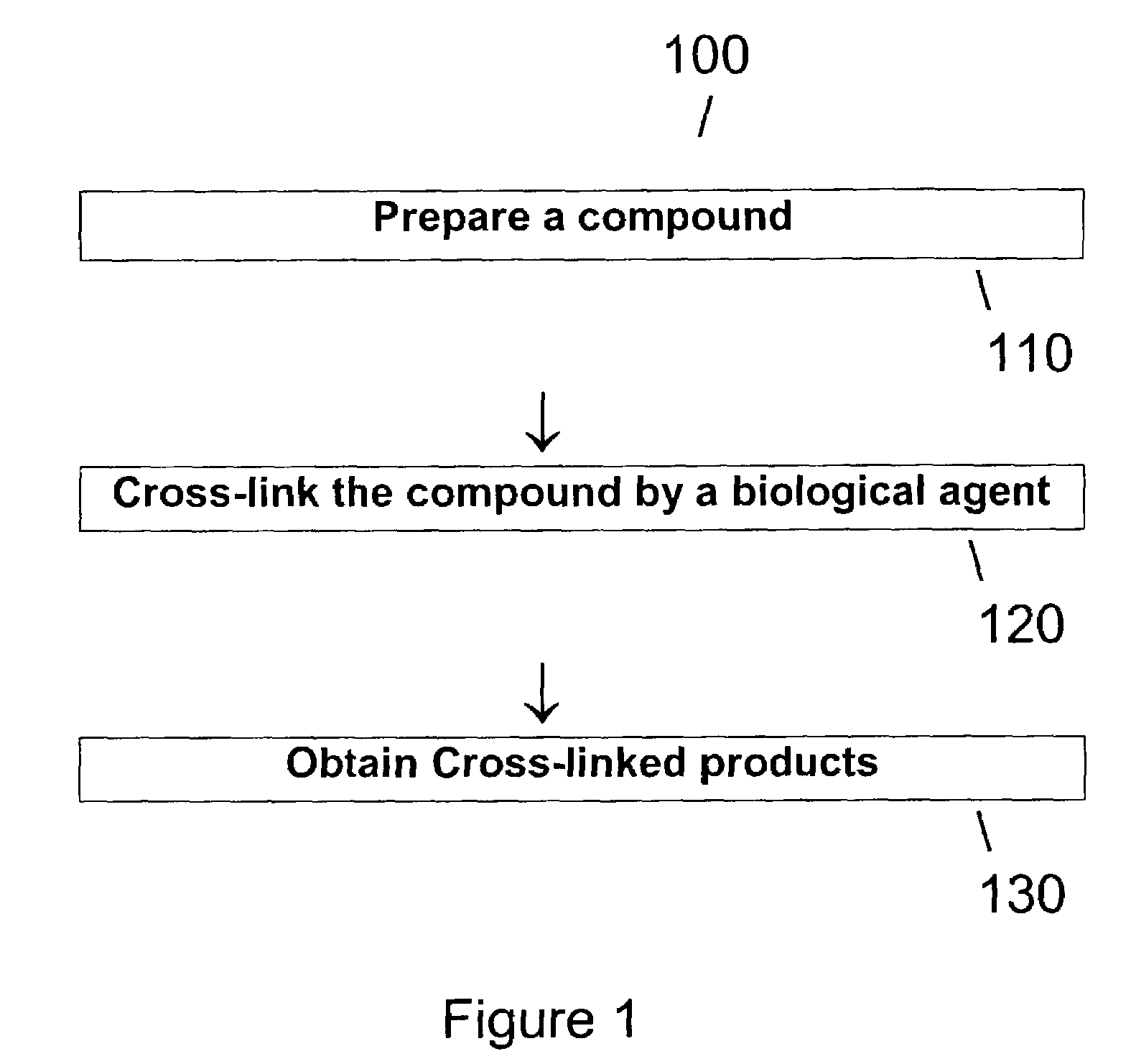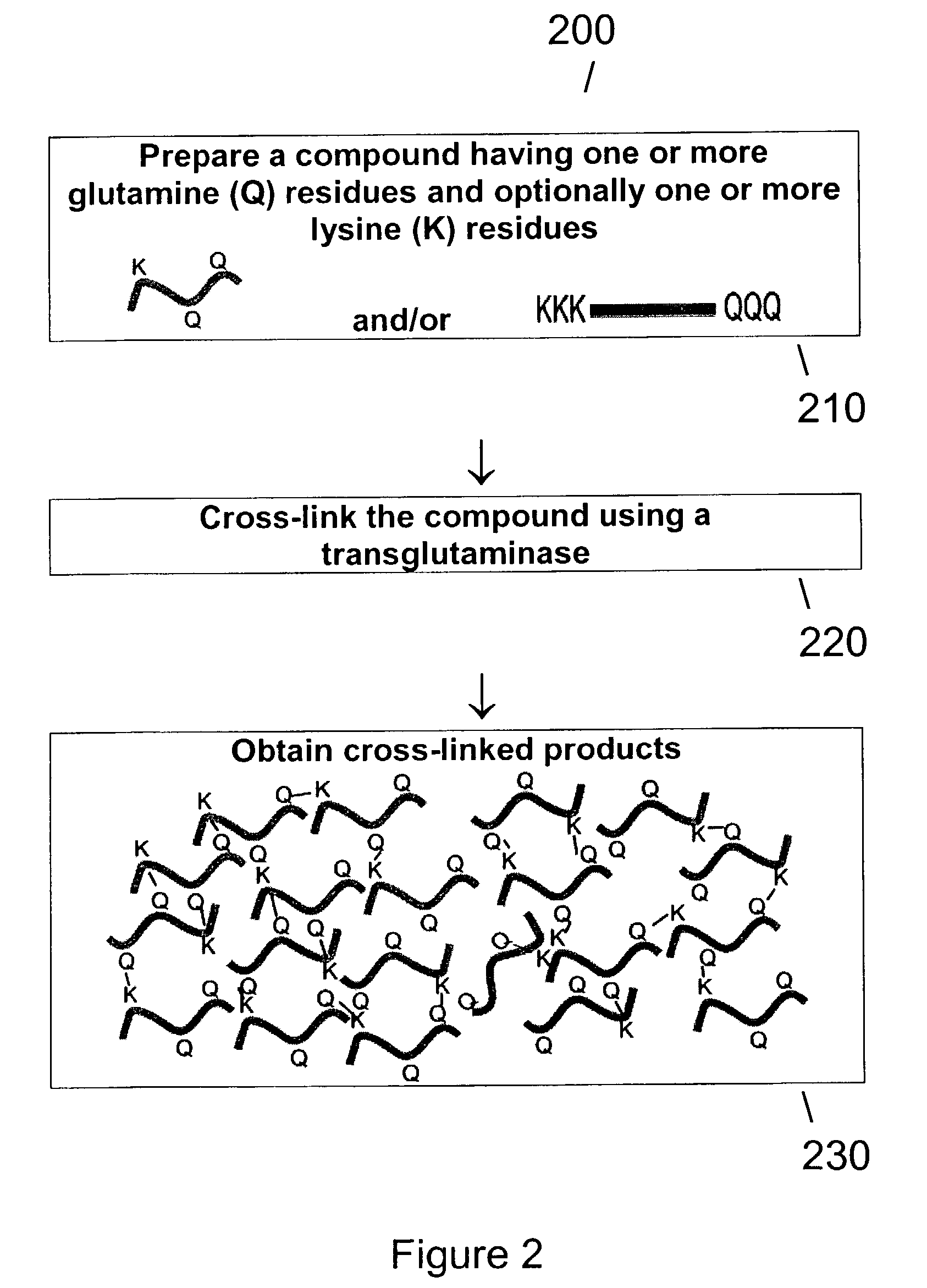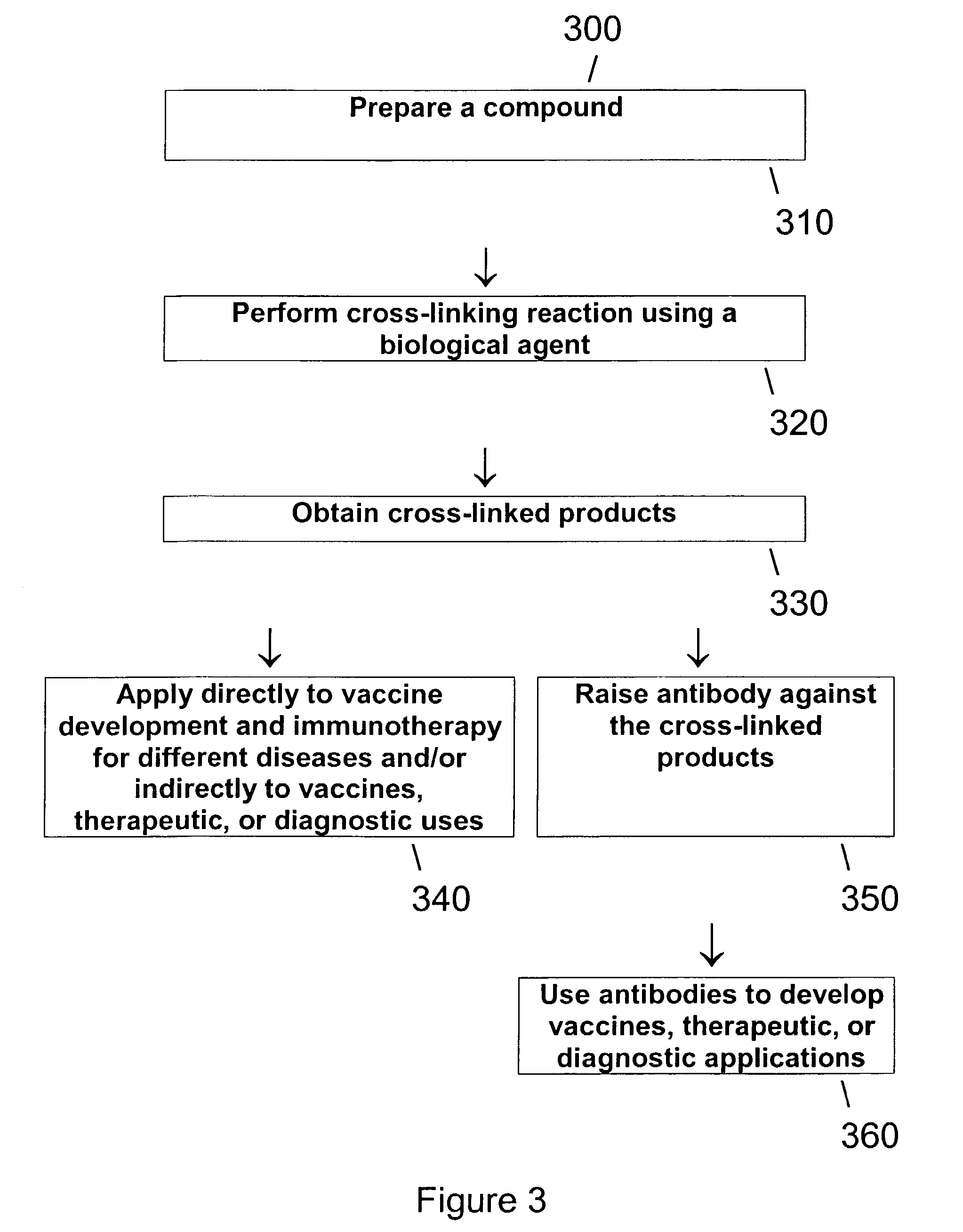Method of producing transglutaminase having broad substrate activity
a transglutaminase and substrate technology, applied in the direction of peptides, nervous system antigen ingredients, enzymology, etc., can solve the problems of limited cross-linking of biological agents such as transglutaminases, and limited number of very specific compounds
- Summary
- Abstract
- Description
- Claims
- Application Information
AI Technical Summary
Problems solved by technology
Method used
Image
Examples
example 1
Isolation of Genomic DNA from Streptomyces mobaraensis and Streptomyces cinnamoneus
[0164]Cultures of Streptomyces mobaraensis (from an ATCC strain, No. 29032) and Streptomyces cinnamoneus (from an ATCC Strain, No. 11874) were grown and harvested into cell pellets. The cell pellets were then freeze-dried before being resuspended and washed in double distilled water and centrifuged again. The washed cell pellets were resuspended in lyses buffer (provided in the DNasey Tissue Kit from Qiagen, Inc.), and genomic DNA was purified as described in a protocol of a DNasey Tissue Kit (from Qiagen, Inc.). Genomic DNA from both strains was purified to homogeneity to be used as a Polymerase Chain Reaction (PCR) template for cloning of the microbial transglutaminase genes from Streptomyces mobaraensis and Streptomyces cinnamoneus.
example 2
Cloning of Transglutaminase Genes
[0165]Cloning of transglutaminase genes from Streptomyces mobaraensis ATCC 29032 (SM TGase) was accomplished by using purified genomic DNA as a PCR template in a PCR reaction and two primers as the 5′ and 3′ primers, SEQ ID NO. 1 and SEQ ID NO. 2, respectively. The sequences of SEQ ID NO. 1 and SEQ ID NO. 2 are based on the Gene bank Accession number Y18315 encoding the mature SM TGase polypeptide from Streptomyces mobaraensis DSMZ and further include pre-designed extended Nhe I and Hind III recognition sequences respectively.
[0166]Cloning of transglutaminase genes from Streptomyces cinnamoneus ATCC 11874 (SC TGase) was accomplished by using purified genomic DNA as a PCR template in a PCR reaction and two primers as the 5′ and 3′ primers, SEQ ID NO. 3 and SEQ ID NO. 4, respectively. The sequences of SEQ ID NO. 3 and SEQ ID NO. 4 are based on the Gene bank Accession number Y08820 encoding the mature SC TGase polypeptide from Streptomyces cinnamoneus C...
example 3
DNA Sequences of Transglutaminase Genes from Two G(+) Actinomycetes
[0169]Sequencing of pCR2.1-SMTG revealed a DNA sequence, SEQ ID No. 5, encoding the mature TGase protein from Streptomyces mobaraensis ATCC 29032 without the signal peptide. The translated amino acid sequence is shown as SEQ ID No. 6.
[0170]Sequencing of pCR2.1-SMTG revealed a DNA sequence, SEQ ID No. 7, genes encoding the mature TGase protein from Streptomyces cinnamoneus ATCC 11874 without the signal peptide. The translated amino acid sequence is shown as SEQ ID No. 8.
[0171]Table 1 is a comparison of the two DNA sequences SEQ ID No. 5 (upper sequence) and SEQ ID No. 7 (lower sequence) by BLAST alignment. The alignment indicates about 84% sequence identity between the DNA sequence of the mature TGase protein from Streptomyces mobaraensis ATCC 29032 and the mature TGase protein from Streptomyces cinnamoneus ATCC 11874.
[0172]
TABLE 1Blast alignment of SEQ ID No.5 and SEQ ID No.7.cagcagcggcctggtgccgcgcggcagccatatggctagc-...
PUM
| Property | Measurement | Unit |
|---|---|---|
| Fraction | aaaaa | aaaaa |
| Fraction | aaaaa | aaaaa |
| Molar density | aaaaa | aaaaa |
Abstract
Description
Claims
Application Information
 Login to View More
Login to View More - R&D
- Intellectual Property
- Life Sciences
- Materials
- Tech Scout
- Unparalleled Data Quality
- Higher Quality Content
- 60% Fewer Hallucinations
Browse by: Latest US Patents, China's latest patents, Technical Efficacy Thesaurus, Application Domain, Technology Topic, Popular Technical Reports.
© 2025 PatSnap. All rights reserved.Legal|Privacy policy|Modern Slavery Act Transparency Statement|Sitemap|About US| Contact US: help@patsnap.com



